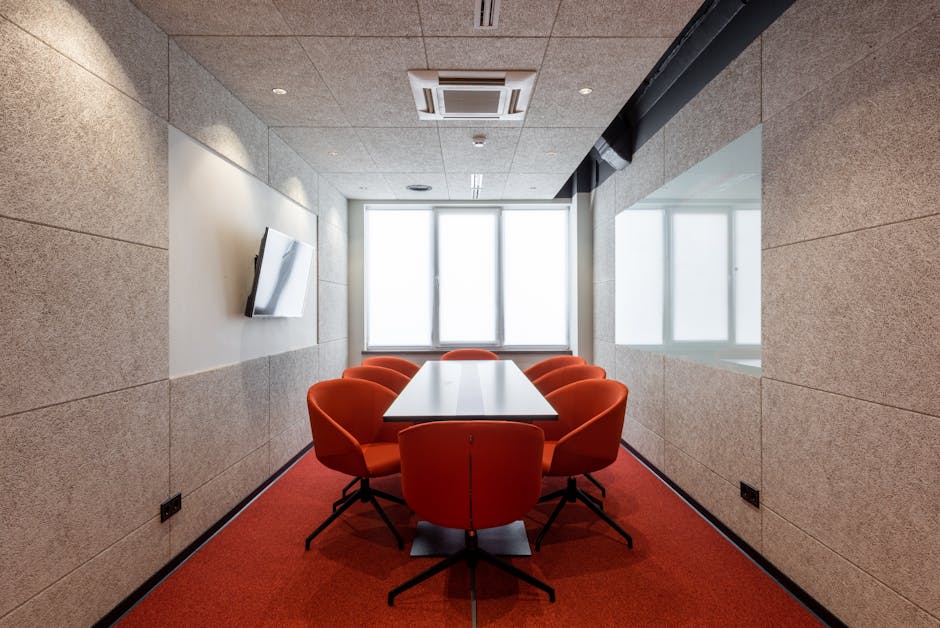Articles on Technology

Revolutionizing Visitor Management: The Power of iPad-Based Systems
Explore the benefits of implementing a simple, yet powerful iPad-based visitor management system in your workplace. Learn how this technology enhances security, streamlines check-in processes, and creates a professional first impression for your guests.
By Amelia Clarkson

Mastering Hybrid Meetings: The Future of Workplace Communication
As workplaces evolve, hybrid meetings have become essential for seamless communication. This article explores the concept of hybrid meetings, their benefits, and best practices for implementation, helping organizations adapt to the changing landscape of work.
By Sophia Marshall

The Modern Mailroom: Revolutionizing Workplace Package Management
As e-commerce booms and personal deliveries to workplaces increase, the traditional mailroom is undergoing a transformation. This article explores the challenges and solutions in modern mailroom management, highlighting its impact on workplace efficiency and employee satisfaction.
By Nathanial Sterling

Revolutionizing Workplace Flexibility: The Rise of Office Hoteling Software
This article explores the growing trend of office hoteling and how specialized software is reshaping workplace dynamics. Learn about key features to look for in hoteling solutions and best practices for implementation to boost productivity and employee satisfaction.
By Isabella Hunter

Maximizing Efficiency: How Onsite Companies Can Thrive in the Modern Workplace
This article explores how onsite companies can leverage workplace technology, data-driven insights, and innovative strategies to improve efficiency, foster collaboration, and create a more productive work environment. Learn about the latest trends and best practices for optimizing onsite operations in the modern business world.
By Julian Everett

Point Solutions vs. Platforms: Choosing the Right Workplace Management Strategy
This article delves into the world of workplace management solutions, comparing point solutions with comprehensive platforms. We examine the benefits of each approach, helping decision-makers choose the best strategy for their organization's current needs and future growth.
By Julian Everett

Maximizing Office Space: How Room Management Tools Boost Productivity
In today's dynamic work environment, efficient space utilization is crucial. This article explores how room management tools can transform your office, streamline booking processes, and create a more productive workspace for employees.
By Sophia Marshall

SafeVisitor Solutions: Enhancing Workplace Security with Advanced Background Checks
This article explores the innovative SafeVisitor solutions, focusing on their advanced background check capabilities and how they contribute to creating a secure workplace environment. We delve into the importance of visitor management systems in modern offices and how SafeVisitor's login process enhances overall security measures.
By Alexander Bennett

Securing the Hybrid Workplace: Essential Strategies for Modern Businesses
As businesses adapt to hybrid work models, security remains a top priority. This article explores essential practices for creating a secure hybrid workplace, from cloud-based systems to integrated cyber-physical security strategies.
By Sophia Marshall

The Evolution of Visitor Management: From Sign-In Sheets to Digital Solutions
This article examines the shift from paper-based visitor logs to digital visitor management systems, highlighting the security risks of traditional methods and the benefits of modern solutions for workplace efficiency and compliance.
By Amelia Clarkson

The Evolution of Workplace Phone Policies: Balancing Productivity and Connectivity
This article examines the evolution of workplace phone policies, from strict bans to strategic integration. We discuss how businesses are harnessing the power of smartphones to improve workplace efficiency, security, and employee satisfaction in the modern era.
By Amelia Clarkson

10 Best Large Touch Screen Monitors for Collaborative Workspaces
Large touch screen monitors are transforming collaborative workspaces, enabling seamless interaction and boosting productivity. In this article, we explore the 10 best large touch screen monitors for conference rooms, meeting spaces, and interactive environments. From giant touchscreens to dual touch screen setups, discover the perfect solution for your team's needs.